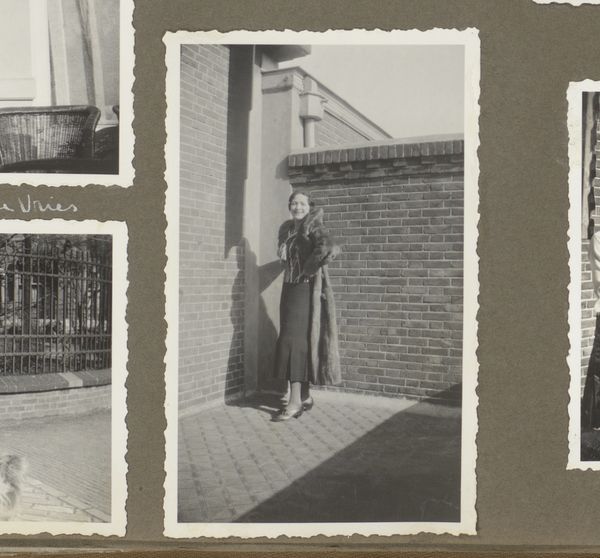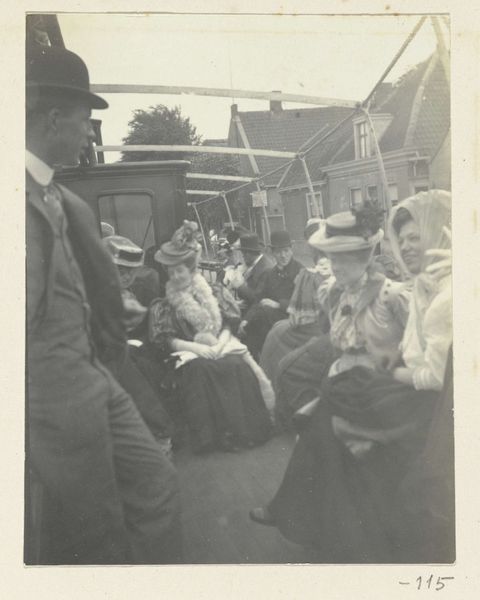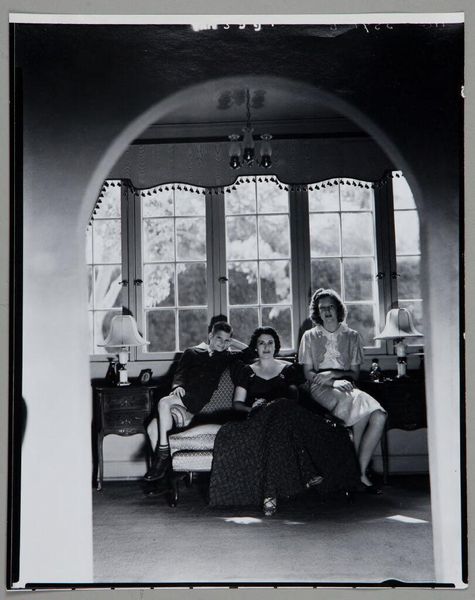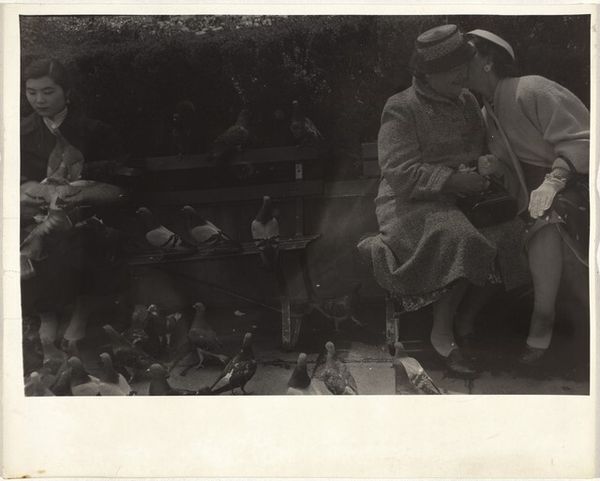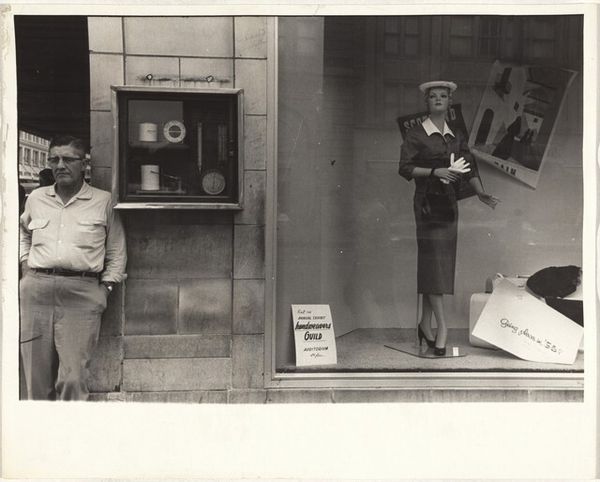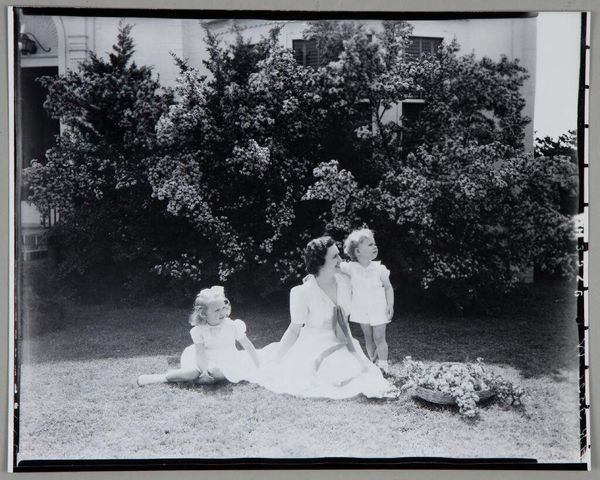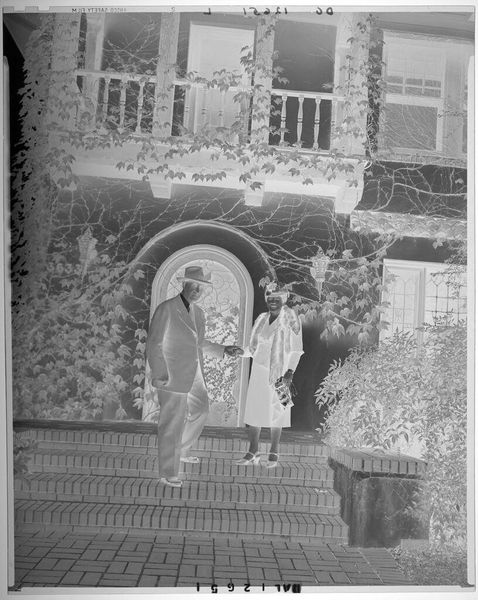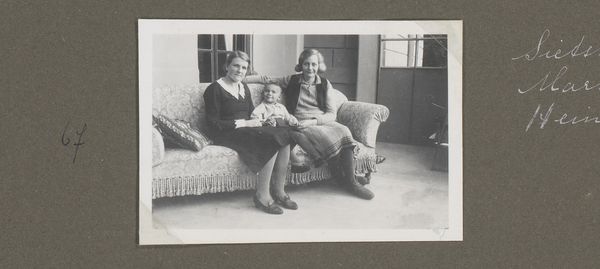
photography
#
portrait
#
photography
#
genre-painting
#
realism
Dimensions: height 75 mm, width 108 mm
Copyright: Rijks Museum: Open Domain
Editor: This is a photograph from 1934 entitled "Wilhelmina van Zijll de Jong en een andere vrouw zittend in een tuin, Londen" which translates to "Wilhelmina van Zijll de Jong and another woman sitting in a garden, London". It seems quite domestic, but almost staged. I'm struck by how contained the subjects appear in their environment. How would you interpret this work? Curator: Considering this through a historical lens, this photograph encapsulates the quiet composure often associated with the interwar period. Photography at this time, while becoming more accessible, still held a certain formality. Notice how the setting, a London garden, creates a public space that emphasizes class and propriety through material possession, even within the confines of the subjects' private life. Are they really "sitting in a garden" or staging this encounter? Editor: So the choice of the garden setting is more about social presentation than about simply relaxing? Curator: Precisely. And the attire and their posture suggest careful self-presentation. The ‘genre painting’ aesthetic indicates how ordinary life at this time had artistic intention in public art programs to inspire through civic virtues. Note the curtains in the windows which seem deliberately visible: domesticity on display. It prompts us to think about the role photography played in shaping social identities and constructing narratives of everyday life. Editor: I never thought of domesticity as a consciously presented identity. That's interesting to consider the socio-political forces at play even in seemingly candid moments. Curator: It highlights how even seemingly personal spaces become arenas where social roles and expectations are negotiated and performed, as filtered through the camera's lens, especially during eras defined by both progress and rigid social structures. This reframes our perspective on seemingly private moments, doesn’t it? Editor: It does. I’ll definitely be looking at other seemingly straightforward photographs with more discerning eyes now.
Comments
No comments
Be the first to comment and join the conversation on the ultimate creative platform.
